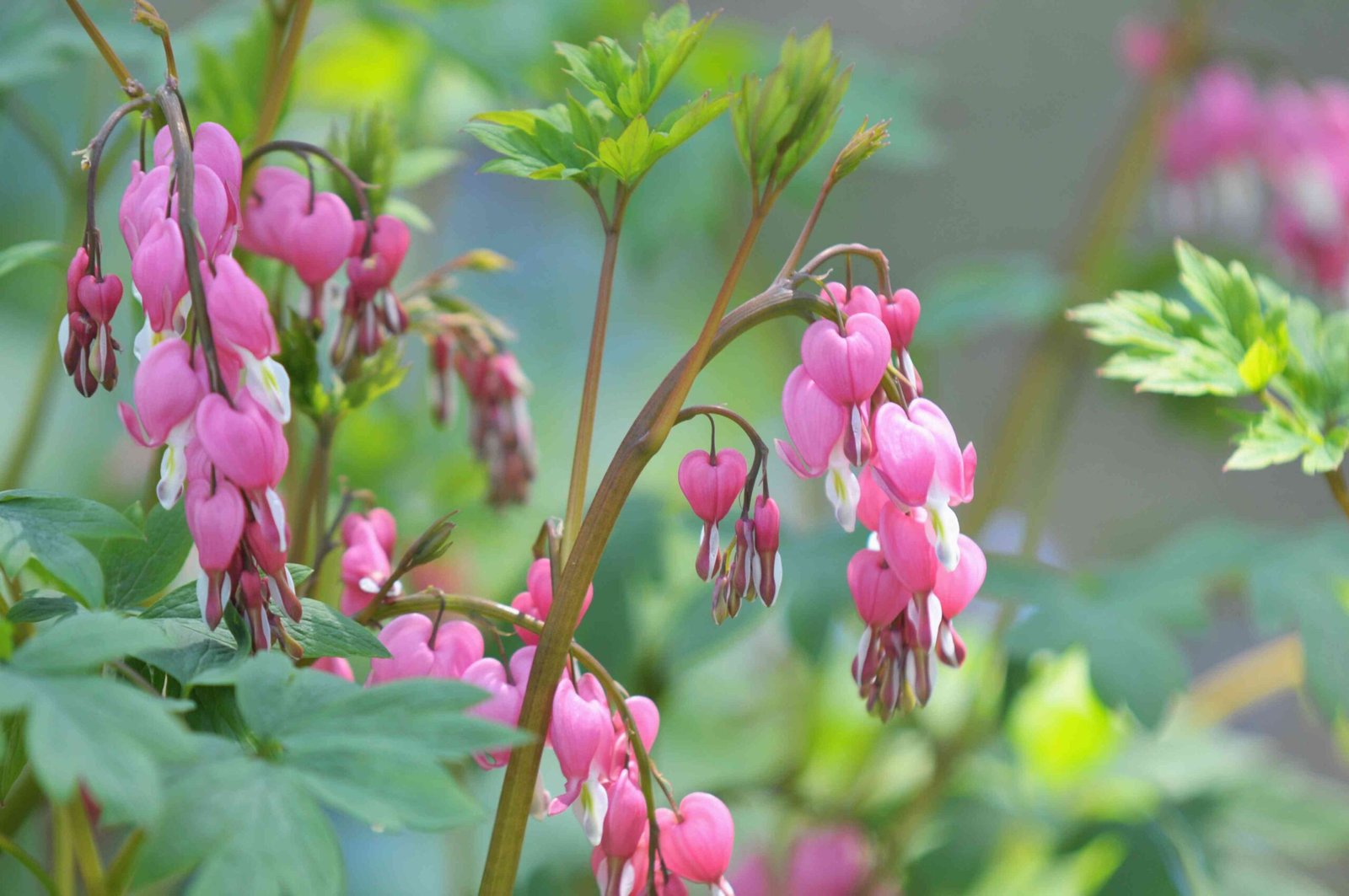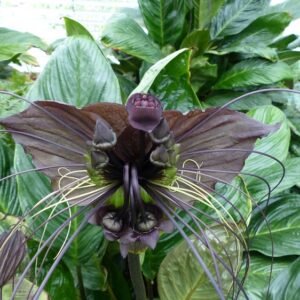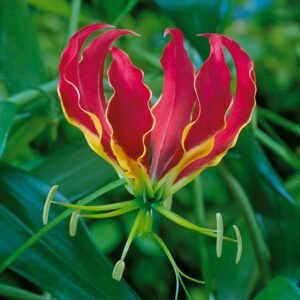Common Name: Bleeding Heart
Scientific Name: Lamprocapnos spectabilis (formerly Dicentra spectabilis)
Family: Papaveraceae (Poppy family)
Origin: Native to eastern Asia (Siberia, northern China, Korea, Japan)
Physical Description:
-
Flowers:
The Bleeding Heart is renowned for its heart-shaped flowers, which appear to “bleed” a single droplet from the bottom. The blossoms are typically pink with a white inner petal, though varieties also come in pure white (‘Alba’) or other subtle shades. Flowers dangle in a row along arching stems, creating a delicate, romantic look. Blooming occurs in spring to early summer. -
Leaves:
The foliage is deeply cut, fern-like, and usually a soft green or bluish-green, adding a lush, textural contrast to the flowers. -
Size:
Mature plants grow about 2 to 3 feet tall and wide.
Care Requirements:
-
Light: Prefers partial to full shade; in cooler climates, it can tolerate more sun.
-
Water: Likes moist, well-drained soil; consistent watering is important, especially in dry periods.
-
Temperature: Thrives in cool, temperate climates. In hotter areas, the plant may go dormant after blooming.
-
Dormancy: It naturally dies back in midsummer, especially in warm weather, so it’s often paired with later-blooming plants in garden designs.
Symbolism & Uses:
-
Symbolism: The Bleeding Heart symbolizes deep love, compassion, and heartbreak. Its unique flower shape evokes strong emotional imagery.
-
Ornamental Use: A classic in cottage gardens, woodland gardens, and shaded borders due to its romantic look and early blooms.




Reviews
There are no reviews yet.